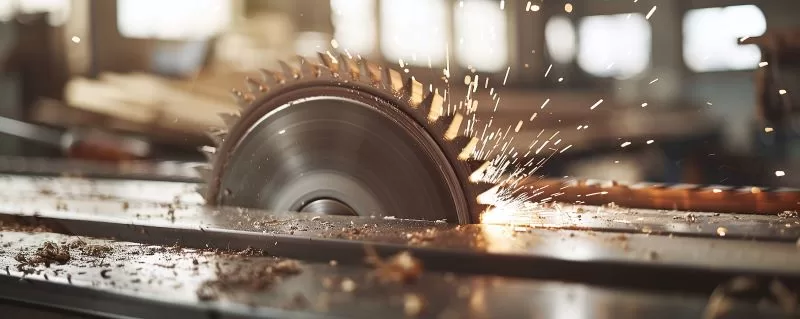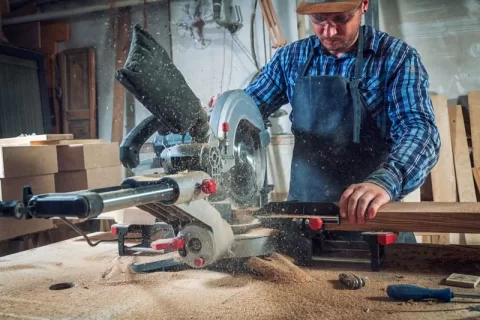Recent advances in the saw manufacturing industry have made it more responsive to user needs. As you walk through a bustling hardware store, don’t be surprised at the dizzying array of saw blades vying for your attention.
But have you ever wondered how these essential tools make their way from the design room to your workbench? If you’re curious about the process, you’re on the right page. This blog discusses current transformations in the sector, primarily driven by the changing demands of various markets worldwide.
Customization: The New Normal
Remember when one-size-fits-all was the norm? Those days are long gone. Saw manufacturers are now offering custom saw manufacturing options depending on your project requirements and preferences. For example, you can order band saws that can tackle any type of material for various applications. Want a blade optimized for cutting exotic hardwoods? Perhaps you need something specialized for composite materials? Consider it done.
Manufacturers can deliver products that mix performance, comfort, and efficiency in one package. By tailoring tools to specific tasks, you’re able to work faster and with greater precision. It’s a win-win for both companies looking to boost productivity and hobbyists aiming for that perfect finish.
The Rise of Collaborative Design
Today, you’re more likely to find a diverse team collaborating on new products. Manufacturers are bringing together engineers, designers, ergonomics experts, and even end-users to create tools that aren’t just functional but also a joy to use. This collaborative approach has led to some truly innovative designs that address issues you might not have even realized were problems.
For instance, have you ever struggled with blade changes in awkward positions? Some new models feature tool-less blade change systems designed with input from carpenters who frequently work in tight spaces. This kind of real-world problem-solving drives the industry forward.
The Digital Revolution in Manufacturing
You’ve probably heard about the various digital technologies used in construction projects. But not many people know that product providers are likewise using advanced transforming how their products are made.
3D Printing
Once limited to prototyping, 3D printing is now being used to produce complex components for high-end saws. This allows for intricate designs that were previously impossible or prohibitively expensive to manufacture.
Digital twins, or virtual replicas of physical products, are being used to simulate and optimize saw performance before a single piece of metal is cut. This means you’re getting tools that have been refined in the digital realm for peak real-world performance.
Advanced Manufacturing Processes
The latest saw manufacturing processes are incorporating materials and functions you’d never thought possible. Imagine wielding a blade coated with diamond particles so fine they’re invisible to the naked eye. These nano-diamond coatings are revolutionizing cut quality and blade longevity.
Smart technology is making its way into the workshop, too. Have you ever wished your saw could tell you when it needs maintenance? This might be possible a few years from now. Advanced models may soon be equipped with sensors that monitor blade wear and performance, sending alerts to your smartphone when it’s time for a tune-up or replacement.
Sustainability: More Than Just a Buzzword
If you think the saw industry isn’t concerned with environmental issues, think again. Sustainability has become a driving force in the industry across the board.
You’ll find companies experimenting with recycled materials for saw handles and packaging. Some are developing biodegradable lubricants for their power tools. But perhaps the most significant shift is in blade design itself.
Engineers are working tirelessly to create blades that cut more efficiently, reducing waste and energy consumption. These innovations often lead to cost savings for you, the end user. Imagine getting more cuts per blade while reducing your carbon footprint. These sustainable initiatives are reshaping the industry.
Embracing the Gig Economy
The rise of the gig economy hasn’t bypassed the world of saw manufacturing. Companies are adapting their product lines to cater to a growing market of part-time professionals and serious DIYers.
You’ll find more modular systems hitting the market, allowing users to customize their tools for different jobs without investing in multiple specialized saws. This flexibility is perfect for those who might be tackling a variety of projects or who are just starting to build their tool collection.
Some manufacturers are even experimenting with tool-sharing platforms similar to car-sharing services. Imagine being able to rent a high-end saw for a specific project without the commitment of ownership. It’s an approach that’s making professional-grade tools more accessible than ever before.
The Global Supply Chain Shuffle
It seems that the world has gotten smaller, with products from across the globe readily available at your local store. This has brought several benefits that enhance the industry across different aspects.
Diversity and Resiliency
Saw manufacturers have been playing a complex game of chess with their supply chains in recent years. With globalization, saw makers don’t have to rely on a single source for materials or components. To boost adaptability, these companies are instead diversifying their supplier networks across multiple countries and continents.
Take the recent global disruptions, for instance. While some industries ground to a halt, many saw manufacturers were able to pivot quickly by implementing flexible supply chains. Beyond sourcing materials from different locations, they’re also setting up manufacturing hubs closer to key markets. This means you might find that your new Japanese-designed saw was actually assembled in Mexico or Poland.
Reducing Costs
This global approach is helping to drive down costs without sacrificing quality. When manufacturers tap into diverse supplier networks, they gain access to unique materials and technologies that might not be available in their home markets. Leveraging the strengths of different regions—whether in advanced robotics or skilled craftsmanship– lets manufacturers deliver better products at competitive prices. It’s a win-win situation that ensures you get top-notch tools without breaking the bank.
Training and Education: Bridging the Skills Gap
With all these advancements, you might wonder how manufacturers are ensuring users can keep up. The answer lies in a renewed focus on training and education.
Many companies are now offering online tutorials, virtual reality training sessions, and in-person workshops to help users get the most out of their tools. It’s not uncommon to find QR codes on packaging that link to instructional videos or safety guidelines. By helping users understand and utilize their products effectively, manufacturers are building brand loyalty and reducing the likelihood of accidents or misuse.
The Future is Bright and Sharp
As you may have realized, the world of saw manufacturing is far from static. It’s a dynamic industry that’s constantly evolving to meet the needs of a changing market. From nano-diamond coatings to AI-powered maintenance alerts, the saws of today are a far cry from their ancestors.
But what does this mean for end users? Whether you’re a construction or manufacturing company owner, a professional carpenter, or a weekend warrior, these advancements translate to better tools, more efficient work, and new possibilities in your projects.


